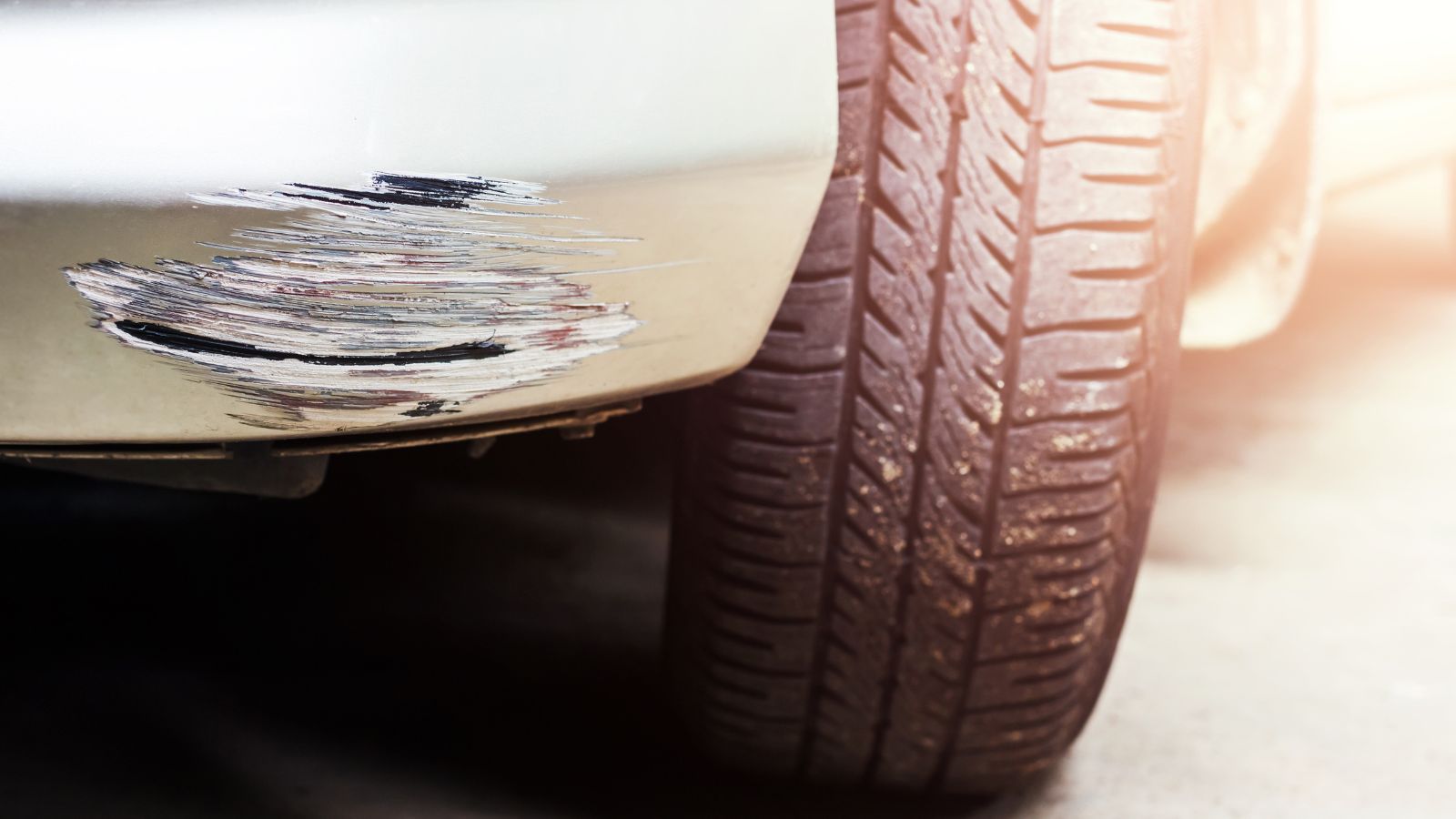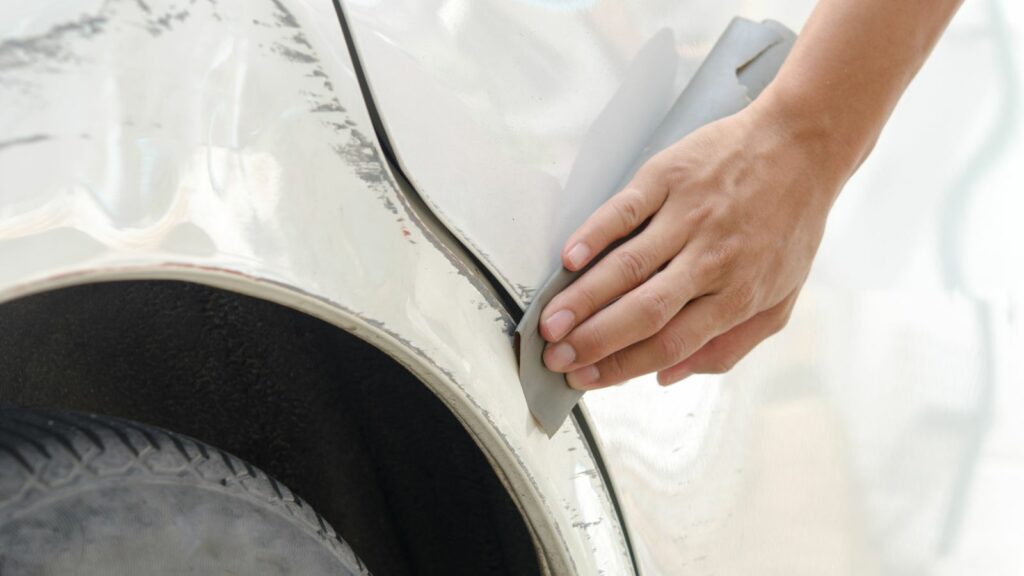Weather and environment are important factors for vehicles. First, they affect how we drive. In rain, snow, and heavy fog, we drive slower and more carefully, and if we don’t, we’re likelier to hit something and need collision repair. Second, weather affects what happens to our vehicles. Hailstones might require dent repair or scratch repair, while accidentally leaving a window open during a downpour can certainly affect the upholstery.
Lastly, the environment or climate of where we live affects our vehicles. If it snows a lot where we live, the moisture of the snow and slush can speed up oxidation, but so can road salt. Similar issues exist in rainy environments, while extreme heat can damage engines and transmissions. But how do any of these affect scratch repair?
What is scratch repair?
Scratch repair is a type of auto body repair that focuses on the surface of the vehicle. A scratch repair could be part of a broader collision repair—after all, if your vehicle collides with something, it will probably scratch the paint at the very least—and sometimes scratches just happen. You could brush up against a bush, scrape against a pillar in a crowded parking lot, or be the victim of vandalism.
Often, dent repair accompanies scratch repair. If something hits your vehicle hard enough to dent it, there’s a good chance it will scratch the paint, too. This isn’t always the case, though, and sometimes an auto body repair shop will perform a paintless dent repair, or PDR. PDRs are often necessary when a round, smooth object causes a dent, leaving the paint intact. And of course, many things can scratch your vehicle without denting it.
One caveat is that, when we talk of scratch repair, we mean a scratch to the body of the vehicle, specifically the finish. This doesn’t refer to scratches on the windshield or other automotive glass. Windshield repair can fix scratches and chips. This happens when auto repair technicians inject auto glass chips with a special resin and then clamp the windshield in place to ensure it cures properly. Sometimes, though, windshield scratches require a full windshield replacement.
How does weather affect scratch repair?
One obvious way weather affects scratch repair is by making it much more likely. For example, hail affects scratch repair by causing scratches. If the weather wasn’t raining down hailstones, then it couldn’t have scratched your vehicle.
Rain and snow can also make scratch repair more necessary. Rain won’t actively scratch your vehicle, but if moisture gets underneath the outer coating of your vehicle’s paint job, this can be a big problem. This can allow rust to spread, causing more paint to flake off and potentially even compromising the structural strength of the vehicle panel. That’s why if your vehicle suffers a scratch, a collision repair technician might recommend a scratch repair or dent repair as soon as possible. Waiting can allow moisture to seep in, causing long-term damage.
Temperature and scratch repair
Temperature can play a big role in priming vehicle paint to be susceptible to scratches. We’ve gone over some of the common winter weather problems: moisture and salt. Both eat away at vehicle finishes, making scratch repair likelier and possibly a bigger job than would be required in a warmer, more arid environment.

But the temperature itself can be an issue. Everyone knows freezing cold temperatures can necessitate auto body repair if it kills the battery or even the engine. And, of course, sub-zero temperatures cause ice to form, which can lead to collisions and collision repair. But even apart from all that, cold temperatures make the paint on vehicles more brittle. This means backing up into a bush can chip off a lot of paint in February, but the same low-speed collision in May wouldn’t require any scratch repair.
And if that same bump into a bush happened in July? Then the chances of needing a scratch repair go back up. This is because extreme heat can also affect vehicle paint. If your car has been sitting out in the summer sun, the heat can almost melt the finish. It won’t drip off your car or anything, but it can make it much easier to chip the paint off.
Temperature during scratch repair
The temperature at the time an auto body repair technician performs a scratch repair on your vehicle can also matter. Extreme cold and heat can cause problems during the process.
Cold weather and scratch repair
In temperatures below 10°C (50°F), automotive paint can thicken, meaning it doesn’t go on the vehicle smoothly. This can result in uneven paint and clear coats looking dull and unprofessional. Furthermore, everything takes longer to dry in cold temperatures. If the paint job doesn’t cure properly, the repair might not bond well or may peel later.
Hot weather and scratch repair
In temperatures of 30°C (86°F) or higher, automotive paint can actually dry too fast, leading to poor levelling, brush marks, or “blushing,” which is a cloudy appearance in the clear coat.
On a hot sunny day, the surface of a vehicle might approach 50°C (122°F), which can cause solvent bubbling or adhesion issues. Last, heat causes waxes or polish residues to rise to the surface of the paint, which can interfere with bonding.
Professional scratch repair
Competent, trustworthy auto body repair shops have climate-controlled environments in which they can perform all collision repairs, including scratch repair. If you need a scratch repair in the dead of winter or summer, take precautions to give the new paint job long enough to cure, and don’t park under the noonday sun with no shade.

